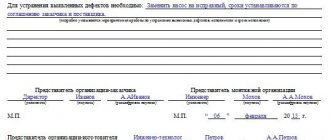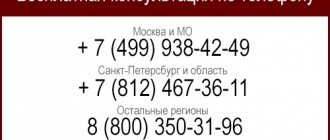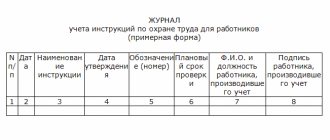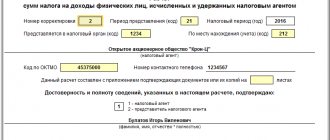Why do you need an explanatory note?
As a rule, violations that require an explanation from the employee are quite serious and can lead to disciplinary action, including dismissal. To avoid this and honestly understand the situation, a competent manager asks for written explanations.
An explanatory note can protect an employee in controversial situations when there is a disagreement with the employer, and can also acquire the status of an evidentiary document in the event that either party goes to court.
When to write an explanatory note
There are certain deadlines for writing an explanatory note: no more than two working days from the date of the incident. That is why the employer, when drawing up a written request for explanations, must set a date - the report will be kept from this date. If an explanatory note is not written within the prescribed time, the employer has the right to apply to the subordinate any penalties adequate to the offense and within the framework of the law.
It should be remembered that only one disciplinary punishment can be applied for one violation and no later than a month after the fact of the violation is established (the fact is also established in writing, by drawing up and registering a special act).
Requirements for filling
According to Russian legislation, an explanatory note is written in the name of the manager and handed over to the immediate head of the structural unit in which the compiler works. If the employer has decided to apply a disciplinary sanction, an order or directive is drawn up. Within three working days from the date of publication, this order must be announced to the employee against signature. If the employee refuses to familiarize himself with it, a corresponding report is drawn up.
The explanatory note has the following structure:
- The header of the document, which indicates the name of the organization, the official to whom this document was sent.
- The name of the document in this case is “Explanatory Note”
- Date of application and registration number
- Subject of the statement (reason, etc. regarding, about, etc.)
- Main text
- Name, surname, patronymic and position of the compiler and his signature
In business style, it is important to use sustainable business practices, which in some cases are enshrined in law.
In this case, it is necessary that the document being filled out meets several requirements at once:
- reliability;
- objectivity;
- consistency;
- argumentation;
- brevity;
- clarity;
- unambiguity;
An important point in intra-company business correspondence is the fact that all documents must be registered. In this case, registration of such documents is carried out according to the order of the head. After the manager has studied all the circumstances of the violation and decided on further actions, a signature is placed.
explanatory note can be found here (Word, .doc format)
Procedure and rules for filling out
The explanatory note has a fairly simple structure, which must contain the following data:
- Name of structural unit
- To the head of the unit organization Resolution
- FULL NAME. EXPLANATORY NOTE on violation of labor discipline
- FULL NAME. employee, job title
- Division name
- Start date of employment relationship
- Type of violation
- Description of the reasons and circumstances of the violation
- Date of violation
- Employee position
- Signature/Decryption of signature
Thus, there is no normative form of an explanatory note as such; each company independently prescribes the necessary requirements.
https://youtu.be/oIbCKMVSqqE
However, the explanatory note must include two main parts:
- factual - here it is important to indicate the facts that served as the reason for writing this document
- causal – here it is necessary to specify cause-and-effect relationships.
The practice of using explanatory notes is also used in the educational process for violations committed by students in educational institutions.
Rules for drawing up an explanatory note
The explanatory note is written in free form. It must contain the following information:
- information about the company,
- information about the manager and the offending employee,
- date of offense
- explanations.
The more convincing the main part is, the better for the employee; as arguments, it is best to give arguments that have some kind of written confirmation (for example, if you are late for work - a certificate from a medical institution, or a receipt from a car service with the date and time of the repair, etc. .P.). Also, a positive role is played by repentance for the violation committed (if it is the direct fault of the employee) and a promise to improve in the future and not make similar mistakes.
If the employee does not see any fault, this must also be reflected in the explanatory note, providing all the necessary evidence of its absence.
You can write an explanatory note either by hand or type it on a computer. The first option is preferable and this is how experienced HR specialists and lawyers require the document to be drawn up. In any case, the explanatory note must be certified by the “live” signature of the employee with the obligatory “live” transcript.
The explanatory note must be written in two copies, one of which must be given to the employer, and the second must be kept, but only after the employer puts a mark on both copies that the explanatory notes have been received.
Instructions for writing an explanatory note
An explanatory note from the point of view of the norms and rules of office work has a completely standard structure and should not cause much difficulty when writing
In the “header” of the document in the upper right corner you must enter information about the addressee .
- First, the position of the employee in whose name it is drawn up is indicated (director, general director, head of department, group leader, etc.).
- Then write the full name of the organization, indicating its organizational and legal status (IP, LLC, ZOA, OJSC), as well as the surname, name, patronymic of the addressee.
- After this, information about the employee is recorded in exactly the same way (position, company name, last name, first name, patronymic).
- Next, indicate the locality where the enterprise is registered, as well as the date the application was written.
How to write an explanatory note correctly so as not to be punished
An explanatory note is a document that is usually drawn up by an employee in free form. It is a rare organization that develops ready-made explanatory templates. In it, the employee sets out the circumstances and reasons why he violated the work schedule or committed another action (inaction) that displeased the manager.
Before you write an explanatory note at work (its text itself), the document should be titled correctly. In order not to further irritate your superiors, you should not call it “explanatory,” or “explanatory,” or anything else. In the note, the employee must explain his behavior and show his readiness to correct it.
How to write an explanatory note at work for absenteeism
The Labor Code is quite harsh towards those who skip work. The absence of an employee from the workplace for more than 4 hours threatens him with dismissal - at the initiative of the organization (Article 81 of the Labor Code of the Russian Federation). But you shouldn’t count on the employer’s loyalty even with fewer delays outside the workplace. A likely consequence of frequent lateness will be writing an explanatory note.
Before writing an explanatory note to the director or head of the department, you should carefully consider its content. According to the law, the employee is given 2 days to compile it (Article 193 of the Labor Code of the Russian Federation). Management should be convinced that absenteeism or tardiness occurred either due to external circumstances that the subordinate could not influence in any way, or due to a situation where the citizen could not do otherwise. You can count on the understanding of your superiors if the offender does not show up for work on time for the following reasons:
- sudden illness (of the employee or members of his family);
- providing assistance to strangers (for example, one of the passengers on the subway became ill, and the employee stayed with him until the ambulance arrived);
- difficult transport situation due to a natural disaster, terrorist attack, etc.;
- car breakdown or accident;
- flight delay due to the fault of the carrier, and other valid reasons.
What to write in the explanatory note for absenteeism depends on whether its author really could not come to work on time, or whether what happened was his fault. In the first case, it is enough to clearly state the circumstances, and ideally attach supporting documents, for example, a photo of a traffic jam or a doctor’s certificate. But if the employee himself is to blame for this (overslept, forgot, did not calculate), he should admit his mistake, promising that it will not happen again in the future. A similar explanatory format should be followed in other cases of its design.
How to write an explanatory note to school?
A letter of explanation is not regulated by the legislation of the Russian Federation, therefore it is drawn up in a free style. Nevertheless, it is recommended to fill it out, focusing on the templates of similar letters, namely:
The “header” of the document is located at the top right, where the name of the educational building and its number, the surname and initials of the head of the institution or class (in the dative case) are displayed. More often, such a letter is sent to the management of the school institution.
After the “header” you must write the title (Explanatory note)
The main section of the letter is displayed under the title and briefly describes the circumstances that caused the missed lessons in the school building. The most common reasons are poor health, colds, traveling to competitions, etc. In addition, the date of missed lessons is displayed.
After completing the explanation, you must write down the date the letter was filled out, signature and full name. compiler.
The mentioned letter to the school institution is filled out in the form of a manuscript.
Sample explanatory letter to the school principal
To the director of secondary school No. 22, Rostov, A. A. Kopylov
EXPLANATORY LETTER
My daughter, Filimonova Dasha, a 6-A grade student, was not in school on November 27, 2020 due to deteriorating health.
11.28.2017 (signature) I.V. Filimonov
How to write an explanatory note to kindergarten
An explanation to a child care institution is drawn up according to the same template, which is guided by the general rules of similar documents.
The explanatory note, for the most part, is filled out in the name of the head of the child care institution or, as a last resort, in the name of the teacher. Parents usually draw up such a document when their son or daughter does not attend the institution for several days due to circumstances not related to illness.
Head of municipal educational institution kindergarten No. 3
Fedorova A.I.
(Full name of parent, guardian)
Explanatory letter
My daughter (child’s full name) was not in kindergarten from November 14 to 17, 2020 due to visiting her grandmother in another locality.
November 20, 2017 (signature of parent, guardian).
How to write an explanatory note to a teacher, class teacher, or school principal about a child’s absence from school: rules
Parents often have to bring explanations to the school because students missed lessons.
Children often miss lessons for various reasons, both valid and unjustified. An explanatory document form filled out by parents (guardians) about a student’s failure to attend classes is a documentary explanation of his misconduct due to valid circumstances.
The document is filled out according to the same rules as shown in the “How to write?” section of this article. An explanation is filled out manually on sheet A4 addressed to the teacher, class leader or head of the school institution. But even if the application form is not followed, then this is not a problem, since the teacher knows that the student missed classes with the knowledge of his parents, and did not skip classes of his own free will.
To the director of secondary school No. 32, Rostov
Svetlova T.D.
Explanatory letter
My daughter Tanya Filimonova, a 6th grade schoolgirl, did not show up for her school math lesson on November 17, 2020 due to a cold.
November 20, 2017 (signature) R. I. Filimonov
When can you get fired?
Sometimes workers are interested in how many explanations are needed for dismissal. The answer is this: it’s not the number of such notes, but how management reacts to them. Management must request this document before applying disciplinary action to a subordinate (Article 193 of the Labor Code of the Russian Federation).
It is the presence of a disciplinary sanction against an employee who has repeatedly failed to fulfill his job duties that is one of the reasons for his dismissal. However, issuing an explanatory note does not always entail the imposition of “punishment” on the employee in the form of a reprimand or reprimand. And if the employer is satisfied with the employee’s explanations and does not apply any penalties to him, then any number of such papers can be written - this will not be a reason for dismissal at the initiative of the organization.
Examples of explanatory notes
As already noted, the explanatory organization form is usually not prepared. The guilty subordinate is given a blank sheet, which he fills out independently.
First, an explanatory header is drawn up, which indicates:
- in whose name the document is drawn up (the position of the manager, the organization or division that he heads, and his full name are indicated);
- who compiled the note (position, department, full name).
The form of the explanatory note, although free, requires, in addition to the header, several mandatory details:
- Title of the document;
- its main part (direct explanations of the employee);
- date of the note;
- signature of its author (followed by decoding).
The explanatory note template can be viewed below.
Form and explanation form - how necessary are they?
The explanatory form has not been officially approved, so it is usually written in free form. If you do not know how to correctly write an explanatory note at work (or elsewhere), then you may find the example of an explanatory note available on our website useful.
However, it is also necessary to take into account that local acts of the organization may establish its own explanation form. This happens rarely, but it is not prohibited by law, and if such a form is installed where you work, then you will have to use it.
Sample explanatory note to the boss about being late or absenteeism at work
In whose name is the explanatory note written?
To accurately answer this question, you need to look into the “Internal Labor Regulations”, which should apply in every organization. Most likely, it says that the employee reports to his immediate superior and general director. Then, if something happens, the employee will write an explanation addressed to either his boss or the general director.
Local regulations may establish a different hierarchy: for example, members of a working group report to the head of this group, despite the fact that they represent different departments in it. The group leader can only ask for written explanations if the misconduct is related to the work of the group.
Thus, the security service, corporate culture manager, or head of the personnel department do not have the right to demand explanations from employees of other departments who do not report to them, unless this is expressly stated in the organization’s local regulations.
True, the corresponding powers to these and other officials can still be delegated by order of the general director (for example, to the chairman of the commission to investigate a specific incident).
By hand or on a computer?
The law does not require explanatory notes to be written by hand; they can be typed on a computer. But experienced personnel officers require explanations from employees, written only in their own handwriting. In the event of a labor dispute, this will help the employer protect itself from unlawful actions on the part of an employee who may claim that he was “forced” to sign a text that someone else had already drawn up.
The minimum required composition of handwritten elements, inscribed by the employee on the explanatory note, is as follows: position, personal flourish and I.O. Surname. You cannot limit yourself to just a handwritten personal stroke, because... graphological examination is not able to unambiguously identify some signatures as belonging to a specific person.
And based on whole words (position and surname), this can definitely be done. Details of the explanatory note The form of the explanatory note is relatively free. No one requires an employee to have a thorough knowledge of document preparation standards; compliance with the required minimum is enough.
At the top right of the sheet, information is written in a column about who and by whom the explanatory note is addressed. The employee must indicate his structural unit, position, as well as his full last name, first name and patronymic. The name of the type of document - an explanatory note - is written in the center, after a few lines.
Why do you need an explanatory note?
In the document flow, there are a lot of different documents, including an explanatory note. It is used to explain the reasons for certain situations, actions or facts. The paper is considered by law as a form of employee self-defense. And it is on the correctness of its composition and the logic of the presentation of facts that the subsequent decision of the management depends.
Often an explanatory note is required in the following situations:
- various emergency situations affecting production;
- various violations of labor discipline;
- violation of production discipline;
- various disciplinary offenses;
- misconduct.
In particular, most explanatory notes are drawn up due to being late for work or absenteeism, or failure to fulfill official obligations. Here is a sample out-of-office note:
In what cases is an explanatory note written?
At their core, explanatory notes are documents explaining the reasons for certain facts, and are written in cases of a disciplinary offense, mostly in labor relations; they belong to the second group of explanatory notes under OKUD.
In the all-Russian classifier of management documentation, the unified form of “explanatory note on violation of labor discipline” is designated, has code 0286091 and belongs to class 0286000 “Documentation for registration of disciplinary sanctions.”
Explanatory notes are drawn up on a white sheet of A4 format, both in written format by hand and in printed form. Moreover, some companies have special forms for explanatory notes.
In some cases, explanatory notes include attachments. As a rule, medical certificates, documents from the place of study, etc. are used as evidence that can confirm a good reason for the offense.
Such notes can be either exculpatory, where the cause-and-effect relationships of an incorrect action or inaction are described, as well as explanatory, where clear details of the incident are stated, while the employee himself is not guilty in this case.
The explanatory note covers aspects such as:
- Late
- Absenteeism
- Theft
- Violations of company regulations
- Showing up at work while intoxicated
- Amoral behavior
https://youtu.be/shsGPMwA5DU
Notifying the employee to give an explanation
As already mentioned, the employer is obliged to request a written explanation from its employee before applying a disciplinary sanction (Article 193 of the Labor Code of the Russian Federation). In addition, there is a deadline within which an explanation must be given - two working days. Based on the fact that the legislator allocates a certain time, the employer must document the date when he asked his employee to provide a note. There is no mandatory requirement for this, but from a practical point of view such a document would be useful. Firstly, this is the starting date, and secondly, documentary evidence that the employee’s rights have not been violated. We give an example below to make it clear what should be indicated in it and how to write it. An explanatory note is requested on a letterhead signed by a representative from the employer, whose competence is to impose disciplinary sanctions. Typically, this is the manager or person to whom this authority has been delegated.
What to do next?
The employer, having received the explanatory note, puts on it the registration number of the incoming document and, without fail, the date of reception.
According to Art. 193 of the Labor Code of the Russian Federation, which we referred to at the beginning, the employee has 2 working days to write an explanatory note. If after this time the employee does not provide an explanation, the employer has the right to draw up an appropriate act about this.
In order to insure against unlawful actions on the part of the employer, it is better for the employee to register his explanatory note in the office or with the secretary with an appropriate mark on the document, and then pick up a copy of the explanatory note with this mark.
Another option: the employee can write an explanatory note in 2 copies, and keep one of them, after marking the acceptance. Then no one will be able to say that the employee did not provide written explanations within the period established by law.
Only his employer (as a rule, represented by the general director) has the right to impose a disciplinary sanction on an employee. He formalizes his decision in the form of a resolution. If the manager decides to punish the offender, then subsequent documents are drawn up on the basis of such a resolution (for example, an order of dismissal, etc.).
Detailed description of all situations with explanation:
Situation 1
If they require an explanatory note from you, you must write it, setting out all the circumstances. You need to show that you are doing your best. But since the situation was started through no fault of yours (for example, before you joined this company), it takes time to correct the situation.
Question:
“I have been working at a cellular company in the marketing and contracts department for more than 3 months. I travel to sites where our masts and antennas are installed and deal with contracts. And we still have such objects where contracts have not been made for more than 3 years, i.e. before I come to work.
And they ask me to write an explanation why the agreement has not yet been made and why there is such a fine from the Ministry of Finance... Please advise what I should do? After all, I only just got to these objects, because... I was working on other projects that also had their deadlines passed.”
Answer:
“I, (full name), have been working in the company since January 14, 2014. According to the job description dated January 14, 2014, I am involved in drawing up contracts for the installation of objects. Currently, I have drawn up 50 contracts for newly commissioned facilities. However, the company has facilities for which contracts have not been issued for more than 3 years. Some of these agreements have already been drawn up by me, but due to the large number of objects and their remoteness, I did not have time to prepare all the agreements for signing, including...”
Situation 2
When you are accused, but you have “nothing to do with it,” then defend yourself: “I am not guilty of the breakdown of the device. I consider it necessary to explain that the device is often used... Since the culprit has not been identified, I ask you not to deduct the cost from your wages...”
Perhaps you may have witnesses (my words can be confirmed by my full name, CCTV camera, etc.) or mitigating circumstances (I was in a state of shock due to the incident, damaged as a result of a water supply accident, etc.).
Perhaps it will be beneficial for you, having stated everything as it happened, to remain silent about anything (this is important for you, but does not affect objectivity).
Question:
“On April 28, 2014, I was sent on a business trip for one day to Simferopol for work, and the next day I had to go to work. After 14-00 I was free and was going to go to the bus station, but I suddenly became ill (an attack of hepatic colic).
Since I am a doctor, I had to help myself. When I felt better, I went to the bus station and missed the second to last bus at 19-00. I waited for the last bus at 23-30, but it didn’t come. There was nothing else I could do to get there. Then I called our head nurse and agreed to be replaced the next day.
The director demands an explanatory note, but I don’t know how to write it correctly and I don’t even know who to turn to for help. I don’t want him to know about my health problems (I’m afraid that he might find a reason to fire me). Help me please".
Answer:
Since the explanatory note usually sets out all the circumstances in free form, write everything that way. You don’t have to write about your health condition, but simply refer to the fact that the bus for which you already bought a ticket was cancelled.
Situation 3
When emotions are over the edge at work and the situation concerns personal relationships, and you feel that you have slightly crossed the desired line, what to do in this case? Don't deny the obvious. However, there is always the option to soften things up and try to make someone like you.
Question:
“Please tell me how to correctly draw up an explanatory and counter-memorandum. This is the situation. At the enterprise, salaries are being delayed, and the deputy manager provokes employees to riot, absenteeism, etc., asks for the opinions of employees and reports all our thoughts to management.
In response to these actions, I called her a traitor and a Judas. She wrote a report against me for violating labor discipline, insubordination and insult.”
Answer:
“Deputy Director Budchenkova L.I. systematically incites employees of the enterprise to absenteeism due to delays in wages, engages in denunciations of employees, as a result of which on 02/20/2014 we had a conflict with her, in which I expressed my opinion about her, calling her a traitor. I did not allow any other offensive expressions addressed to her and did not violate labor discipline. I believe that I have the right to express my opinion.”
Alternatively, a counterattack can be used in similar situations. But we keep in mind that outright lies cannot be used. Example: “In the report (indicate position, full name) the situation is reflected in a distorted form.... In addition, Full Name yelled at me and said that everyone in this building is smarter than me (called me incompetent or indicate something else). In this case, I also could not restrain myself and spoke out in a raised voice.”
Another example from the explanatory note: “... However, the technician came only 50 minutes after the call, as a result of which I could not restrain myself and told him in a raised voice that he was negligent in his work.”
Situation 4
If there is a mistake on your part, don't deny it. Try to outline the difficulties you have to overcome. Don’t belittle yourself in vain, everyone has the right to make mistakes. It’s not a fact that the other person will do a better job.
So you still need to find him: go through the interview process in order to meet the requirements for qualification level, experience, salary, and not every applicant will agree to work under such conditions. Therefore, the employer is not always going to fire you at the first opportunity or resort to terrible disciplinary measures against you.
Question:
“I work in court. I did not send the judicial act on time due to workload and confusion on my desktop. As a result, this led to a complaint being filed. They demand an explanation from me. What to write? How can I correctly state that I simply couldn’t cope with my responsibilities due to workload and lack of experience?”
Answer:
“I, (full name), have been working in court since January 10, 2014. Until this time, I had no experience working with court documentation. My job responsibilities include: (list). Document flow is about 300 documents per day.
Due to the heavy workload and lack of work experience, I cannot cope with my job responsibilities. For these reasons, the judicial act dated March 24, 2014 No. ... was sent in violation of the established deadline.”
Similar situation 5
Question:
“Please tell me how to formulate it correctly. I work as a chief specialist at the Compulsory Medical Insurance Fund. The medical institution made a mistake in the annual report, and I overlooked it. Management requires an explanatory note."
Answer:
“I, (full name), when checking the annual report of the Ministry of Health (name), did not notice an error in part (specify section, etc.). This happened due to the heavy workload during the reporting period.”
Situation 6
What to do when you are “backed against the wall” and there are real reasons for it? We must roll and promise not to allow this to happen in the future. It will work if this is an isolated case (they presented it to you), and not blatant systematic abuse.
Question:
“The company does not encourage access to the Internet for non-work matters. From time to time, when I have little work, I visit several forums (flowers, cooking, etc.). They sent me a list of sites (these forums, plus Yandex, Auto RU, which I also visited when choosing a car before purchasing) and asked for an explanation about the unauthorized use of the corporate Internet. How to write correctly?"
Answer:
If you have already been presented with a list, all that remains is to repent: “I admit that I periodically used the corporate Internet for personal purposes. I undertake not to do this again and ask that no disciplinary action be taken against me.”
Situation 7
When you and your immediate boss are on the same page, you need to come up with something neutral that suits everyone.
Question:
I work as a production engineer, and at the checkpoint my personal pass was confiscated because it was expired. The director demands to write a “competent” explanatory note for the security service. Help.
Answer:
“I, (full name), did not renew my personal pass on time due to ....”
... while on a business trip (on sick leave, on vacation, etc.) or the same in relation to the person responsible for extending the pass. Perhaps you applied, but due to your workload (preparing a report, installing new equipment, etc.) you were asked to come back later.
Situation 8
In this case, you need to write a memorandum, because this is a manifestation of initiative on your part and you hope to receive a management decision from management in order to bring the situation back to “normal”.
Question:
“Please help me write to the head of labor protection or who should I write to? The point is this. They put him in charge of the facility for unloading railway cars. There are safety violations according to the instructions for unloading wagons.
The material is stored above normal levels, the site is not covered with de-icing material, the workers are not insulated according to the instructions and are freezing. We work in fog, although according to the instructions it is prohibited. But the head of labor protection says that he does not have the right to stop production.”
Answer:
You need to draw up a memorandum, addressing the head of your organization: “I would like to bring to your attention that the unloading of railway cars is being carried out in violation of safety instructions... etc.” Then you can describe everything as described in your message.
It is understood that the variety of life circumstances will not allow us to provide for every case and provide you with a ready-made sample. But I hope that all the examples of explanatory notes provided will be useful and will help you cope with your specific situation.
Sources:
1) https://nsovetnik.ru/obyasnitelnaya_zapiska/kak_pravilno_napisat_obyasnitelnuyu_zapisku_obrazec/
2) https://delo-ved.ru/obraztsy-dokumentov/infodoki/obyasnitelnaya-zapiska-primery.html
3) https://www.delo-press.ru/articles.php?n=16736
Didn't find the answer to your question? Find out how to solve exactly your problem - call right now: +7 (Moscow) +7 (812) 407-26-30 (St. Petersburg) It's fast and free!
Legal significance of explanatory notes
Article No. 193 of the Labor Code (LC) of the Russian Federation obliges the manager, before making a decision on the degree of guilt and punishment of the employee, to receive his written explanations, which must certainly be taken into account in the process of the official investigation.
The explanatory note is endowed with great legal significance, because it allows:
- objectively and comprehensively assess the situation;
- identify those responsible for the incident;
- take measures to prevent a similar situation in the future;
- exclude further labor disputes based on misrepresentations of facts;
- it is fair to punish (or cancel the punishment) the guilty.
To provide the manager with a legally valuable document, it is necessary to comply with all the rules and regulations when preparing it. From a legal point of view, the note has no evidentiary value and is for informational purposes only.
When to write an explanatory note
There are certain deadlines for writing an explanatory note: no more than two working days from the date of the incident. That is why the employer, when drawing up a written request for explanations, must set a date - the report will be kept from this date. If an explanatory note is not written within the prescribed time, the employer has the right to apply to the subordinate any penalties adequate to the offense and within the framework of the law.
It should be remembered that only one disciplinary punishment can be applied for one violation and no later than a month after the fact of the violation is established (the fact is also established in writing, by drawing up and registering a special act).
Writing deadlines
The Labor Code of the Russian Federation stipulates the exact deadline for drawing up and submitting written explanations.
In Art. 193 it is written that the employer is not authorized to impose a disciplinary sanction, provided that two working days since the request from the subordinate for the specified document.
If the paper is not written, management still has the right to impose punishments such as reprimand, reprimand, dismissal.
When demands come from the management of kindergartens and schools, the norms of the Labor Code of the Russian Federation do not apply. How to write an explanatory note and when to provide it is decided by the administration of the educational institution. Her requests must be reasonable. Sanctions for violation of such requirements are not established by law. Management has the right to make its own decision on how to deal with the offender.










